By Alessandra Ressa
If you feel like going for a beautiful urban walk full of architectural marvels, wild nature, history and breathtaking views, head to Monte Valerio – a green steep hill covered in oaks and pines right behind the University of Trieste.
Once known as Monte Fiascone, it is surprising that very few people know of its existence. It’s the perfect spot if you are looking for a meditative, solitary exploration.

From the central Via Giulia, immediately after the church, climb the steep Via dello Scoglio all the way to Via Zanella. Follow Via Zanella and admire the beautiful country stile old houses, connected to each other by long stairways, with their original and ancient wooden doorways, unexpected courtyards and pretty views of the green hills.

If you see a tall brick tower emerging from the woods on your right (part of the former asylum) – you are heading in the right direction. Via Zanella will take you to Via dell’Università – the main campus of Trieste. At this point you should be about 400 meters past the University’s main majestic entrance, which is on the main road to Opicina.

Cross Via dell’Università and follow the sign Sentiero naturalistico (nature path) along a paved side road. After a few hundred meters, past some modern university buildings, you will reach a beautiful little castle, Il Castelletto di Monte Valerio, this is your first stop.
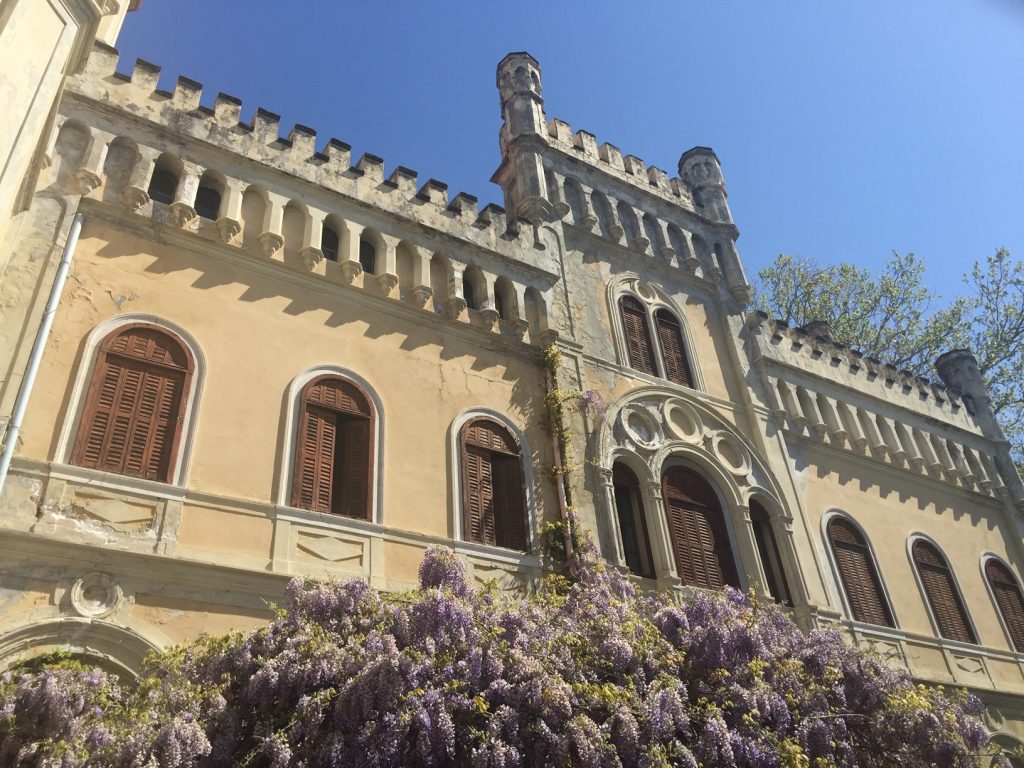
The castle was built in 1862 as the private residence of the Valerios: a wealthy family who owned a well-known chocolate factory. The factory, now gone, was very close to the Villa, at the top of Via Cologna, a dominating position over the town.
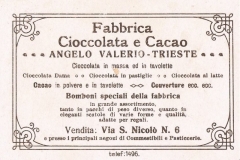
When you looked at Mount Valerio then, you could only see the castle and the chocolate factory among the green.
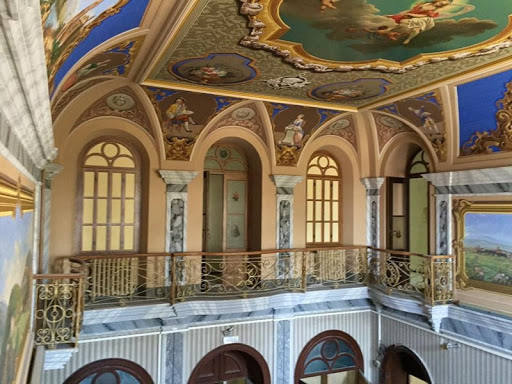
A true paradise, some would say. Villa Valerio is still a little jewel, with a large octagonal tower, entirely surrounded by thick battlements, with beautiful frescos and monumental staircases inside. Its vast park, where now part of the extended campus stands, was surrounded by orchards, vineyards and flowers.

In 1935 Angelo Valerio was forced to sell the villa to Baroness Penelope Sevastopulo, a prominent member of the influential Greek Triestine community. He meant to buy it back as soon as the family’s economic conditions were restored, but that never happened.
Later, in 1962, the Baroness donated the beautiful building to the University of Trieste, which used the land to build annex after annex in what is today a crowded collection of architectural monsters. The “castelletto” today hosts the biology sections of the Schools of Pharmacy and Science.
It has been under renovation for years now, and as there appears to be no advancement in its restyling, it stands in abandonment among the remains of its old luscious gardens: a couple of banana palm trees and bicentennial wisteria.
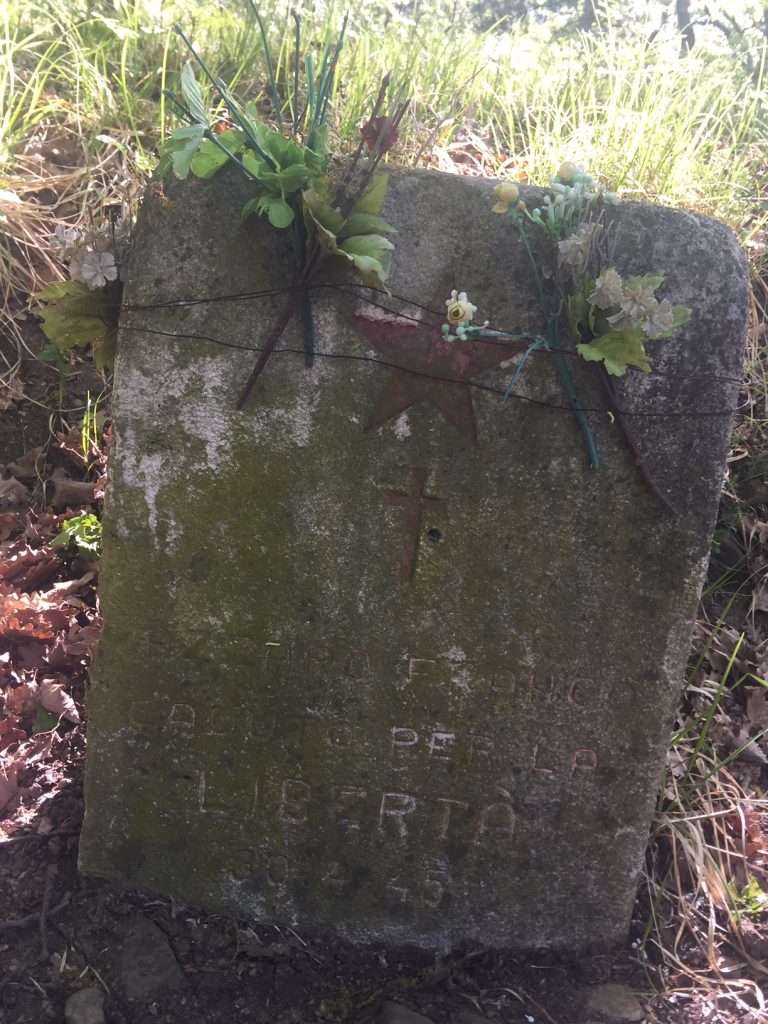
Immediately to the right of the castelletto is the path to access Mount Valerio, named after the family’s glorious past. You will find yourself in a thick forest and immediately enjoy one of the best views of Trieste, where the main tower of the villa dominates the whole city. Proceed uphill and you’ll make an unusual encounter.
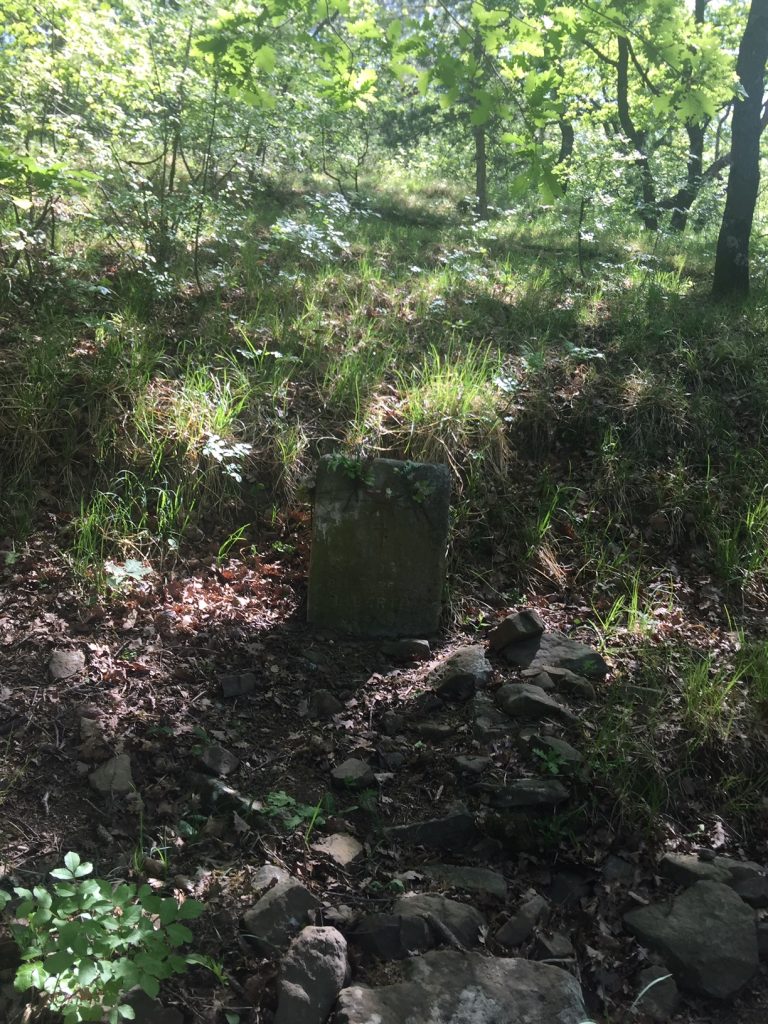
Abandoned and almost invisible in the greenery, there lies a small square gravestone on the side of the path. It’s the grave of Francesco (Franco) Azzaro (Arzarro) – a young partisan, originally from Sicily, who joined the partisan Brigade in Trieste during World War II and fought bravely in these woods, before being shot by fascists on April 30th, 1945 during the final battle to free Trieste from the nazi occupation. He was 25 years old.
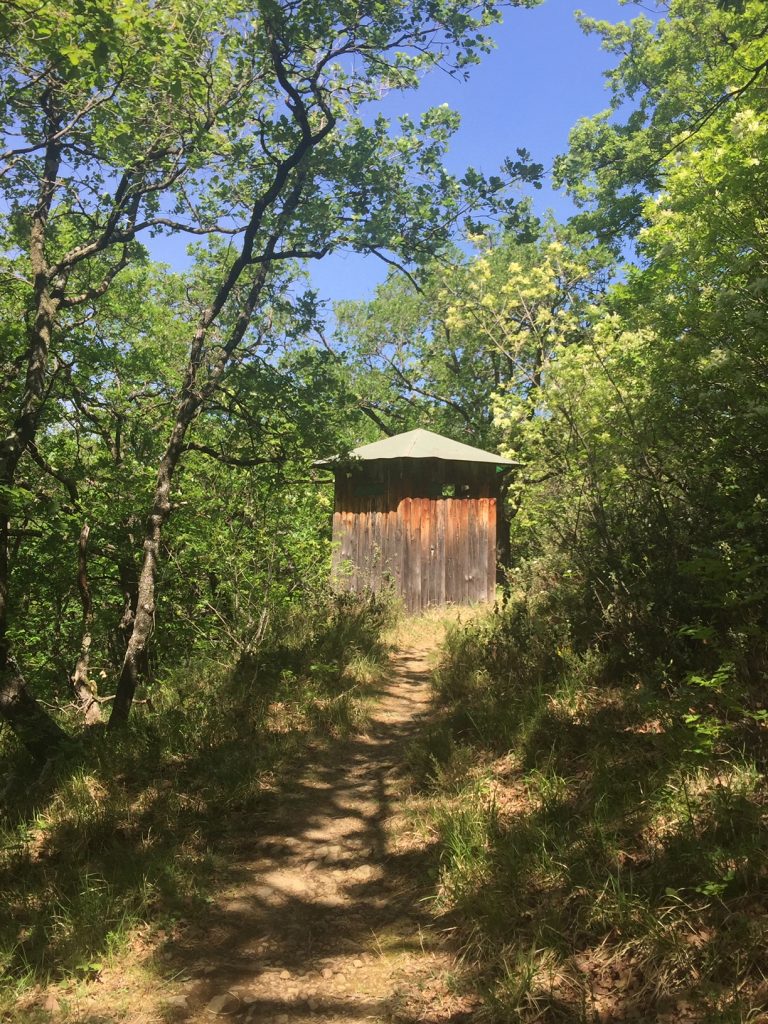
Going uphill on the path you will notice an old hunting blind which is now a great birdwatching spot. While enjoying your walk, don’t miss another piece of local history, this time much older. What looks like a crumbling stone wall is really a protohistoric settlement probably dating back to the bronze age. The entrance to the indoor shelter is still visible.
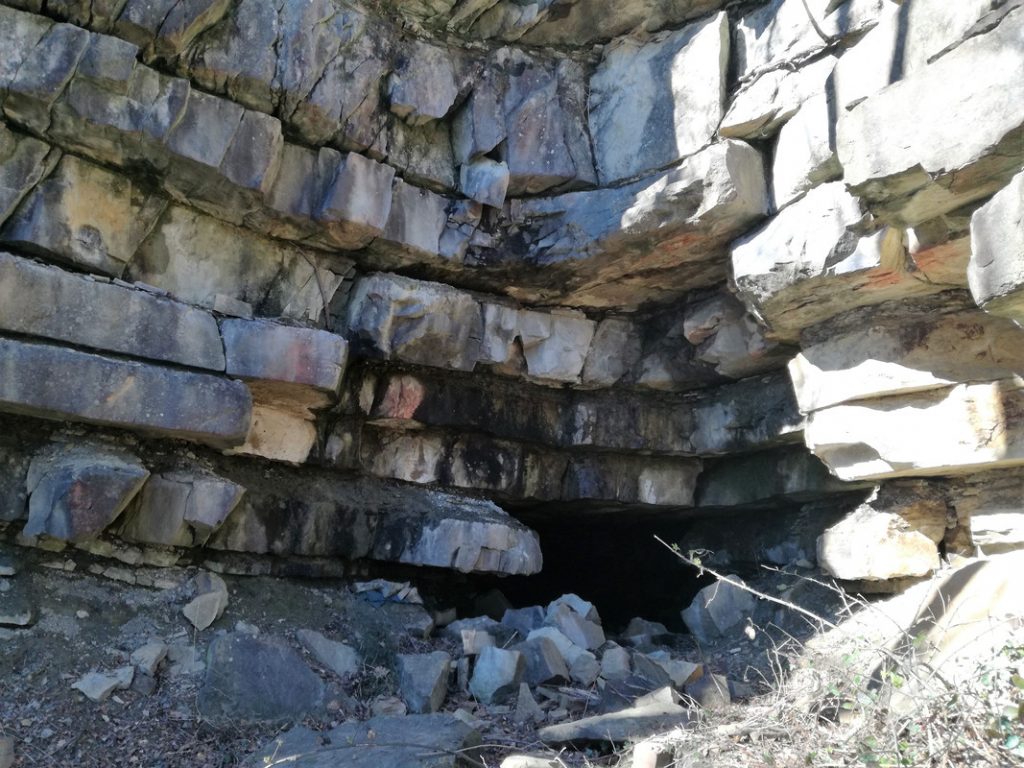
Continue your hike until the path widens and you will get the feeling that you are reaching the top of the hill. At this point you’ll see a narrow, steep secondary path on your left. Take it and you’ll reach the top, where an inviting bench and another breathtaking view of Trieste will be waiting for you.
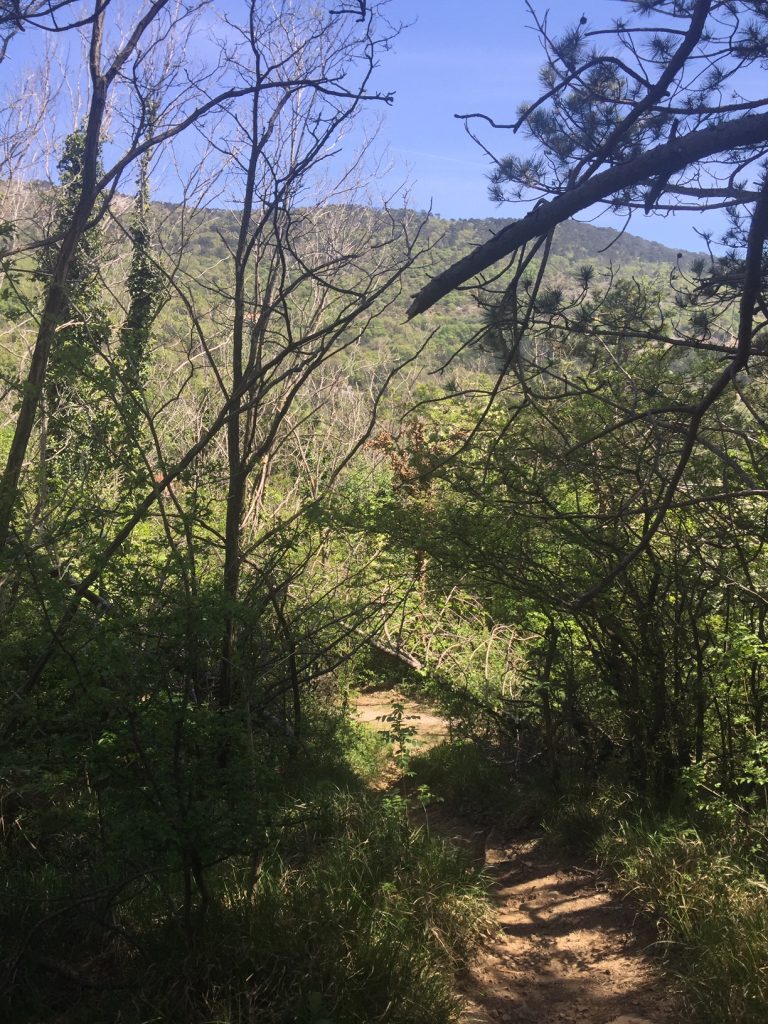
Notice the stone monument under an ancient pine tree. It says “I Figli di Trieste Redenta qui celebrarono la festa degli alberi, 29 Marzo 1922” (The children of Trieste redeemed here celebrated the festival of the trees, 29th March 1922). As bizarre as it may sound today, trees were considered a fundamental part of life and culture during the early fascist period in Italy.

Trees signified permanence, solidity, health, outdoors and nature. Italian elementary school children celebrated “a tree day” every year by planting trees, until war broke out. The monument was erected to remember one such occasion. According to zoologists and botanists of the University of Trieste, Mount Valerio, although so close to the city center, is very rich in biodiversity. There are at least 1,200 different plants and animals in its woods.

























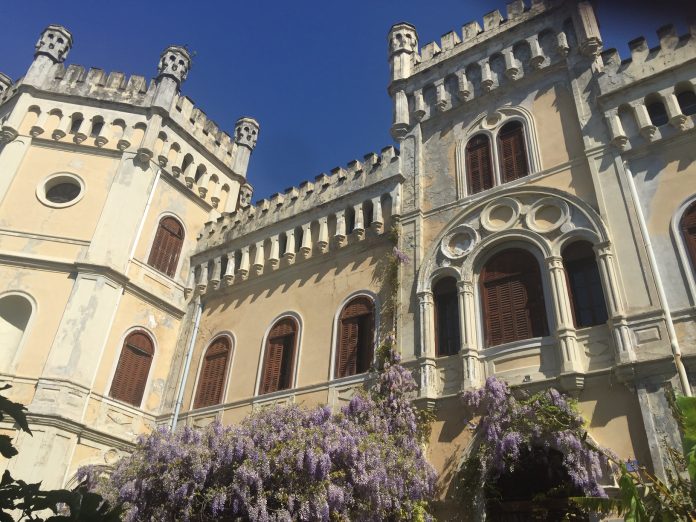




Just a quick note: you mentioned via dell’Università in the article, but that’s not the correct name, you were referring to via Valerio. Via dell’Università is located in a totally different area of the city 🙂
Grazie, Alessandra for the Article on MOunt Valero.
Festa degli alberi has nothing to do with the fascist. Was instituited by Guido Bacelli (historic left) in 1898. In Trieste it was celebrated by irredentisti, so it was considered an Italian manifestation. The 1922 celebration was the first during Italian rule.
Btw in march 22 the fascist were still in opposition.